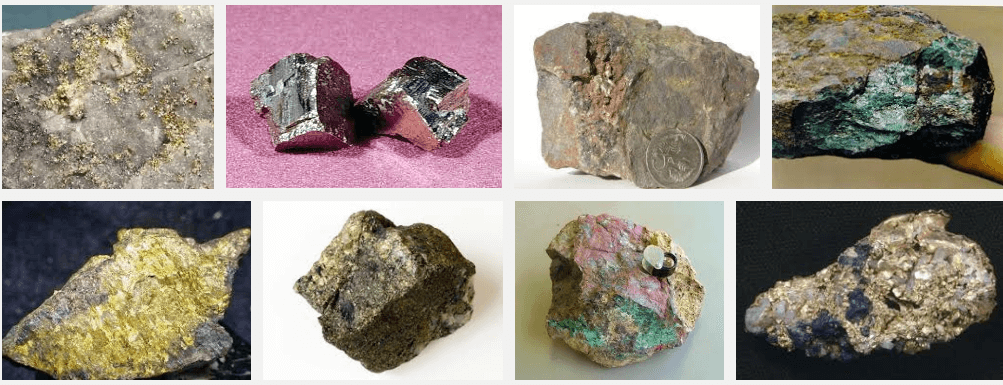To know what type of rock is gold associated with you must see that the minerals most common in placer deposits are platinum, iridosmine, magnetite, iron pyrites, ilmenite, zircon, garnets, rutile and barytes; wolfram, scheelite, brookite and diamonds are less common. Diamonds are associated with gold in Brazil, and also occasionally in the Urals and in the United States. In auriferous quartz lodes the minerals most commonly associated with gold are iron and copper pyrites, zinc blende, galena, and tetradymite. Tellurides of gold are very widely distributed. Other minerals occurring with gold are tourmaline, calcite, uranium ochre, roscoelite, vanadinite, crocoite, wollastonite, gypsum. The sulphides present in auriferous quartz usually contain gold; the gold in such an ore is usually in part quite free, disseminated through the quartz, in which visible grains of the metal often occur, and in part locked up in the pyrites, whence but little . can in general be extracted by mercury. Dr. Don found that in many lodes in Australia, traces of gold at least were present wherever pyrites could be found and absent when no pyrites could be detected. The gold is in all probability in the metallic state in pyrites, although this is not completely established. The subject is discussed in the Section on “ Gold in Pyrites”.

Tellurides
Among minerals other than sulphides which contain gold, the tellurides are of most importance in metallurgy. Calaverite is a bronze-yellow gold telluride, usually containing a little silver, occurring in Western Australia and in certain mines in California and Colorado. One analysis gave tellurium 55.5 per cent., gold 44.5 per cent., corresponding to the formula AuTe2. Another analysis from Kalgoorlie showed gold 41.76 per cent., silver 0.80 per cent., and tellurium 56.65 per cent. Krennerite is similar in composition and appearance to calaverite but is orthorhombic. It occurs in Transylvania and Cripple Creek. Sylvanite, called also graphic tellurium, is a telluride of gold and silver, supposed to correspond to (AuAg)Te2. It sometimes contains antimony and lead in addition. It is from white to brass-yellow in colour, and the arrangement of the crystals sometimes bears a resemblance to writing characters, whence the name graphic. The following analyses agreeing in composition with sylvanite by F. C. Smith are from the Black Hills, South Dakota, and from Cripple Creek respectively

It occurs also at Kalgoorlie, in Transylvania, in Calaveras County, California, and in Colorado.
Petzite is a telluride of silver, Ag2Te, in which the silver is partly replaced by gold. A specimen from the Golden Rule Mine, according to Genth, contained tellurium 32.68 per cent., silver 41.86 per cent., and gold 25.60 per cent. It occurs in Transylvania, Chili, California, Colorado, and Utah.
Nagyagite or Foliated Tellurium is remarkable for being foliated like graphite, which it also resembles in its colour, a blackish lead-grey, and in having a hardness of from 1 to 1.5 only. Its density, however, is above 7. It occurs in Transylvania, and contains tellurium 32.2, lead 54.0, gold 9.0 to 13.0 per cent, sometimes with silver, copper, and sulphur in addition.
Kalgoorlite is an iron-black mineral, with sub-conchoidal fracture occurring at Kalgoorlie, Western Australia. Its analysis corresponded to the formula HgAu2Ag6Te6. Other gold tellurides and some native gold amalgams are occasionally met with. At Kalgoorlie, at the Cripple Creek district, Colorado, in Transylvania, in Boulder County, Colorado, and in many other localities, the value of the ore depends on the tellurides of gold contained in it.
